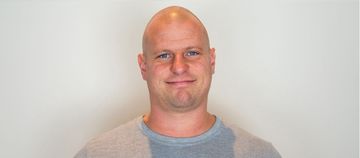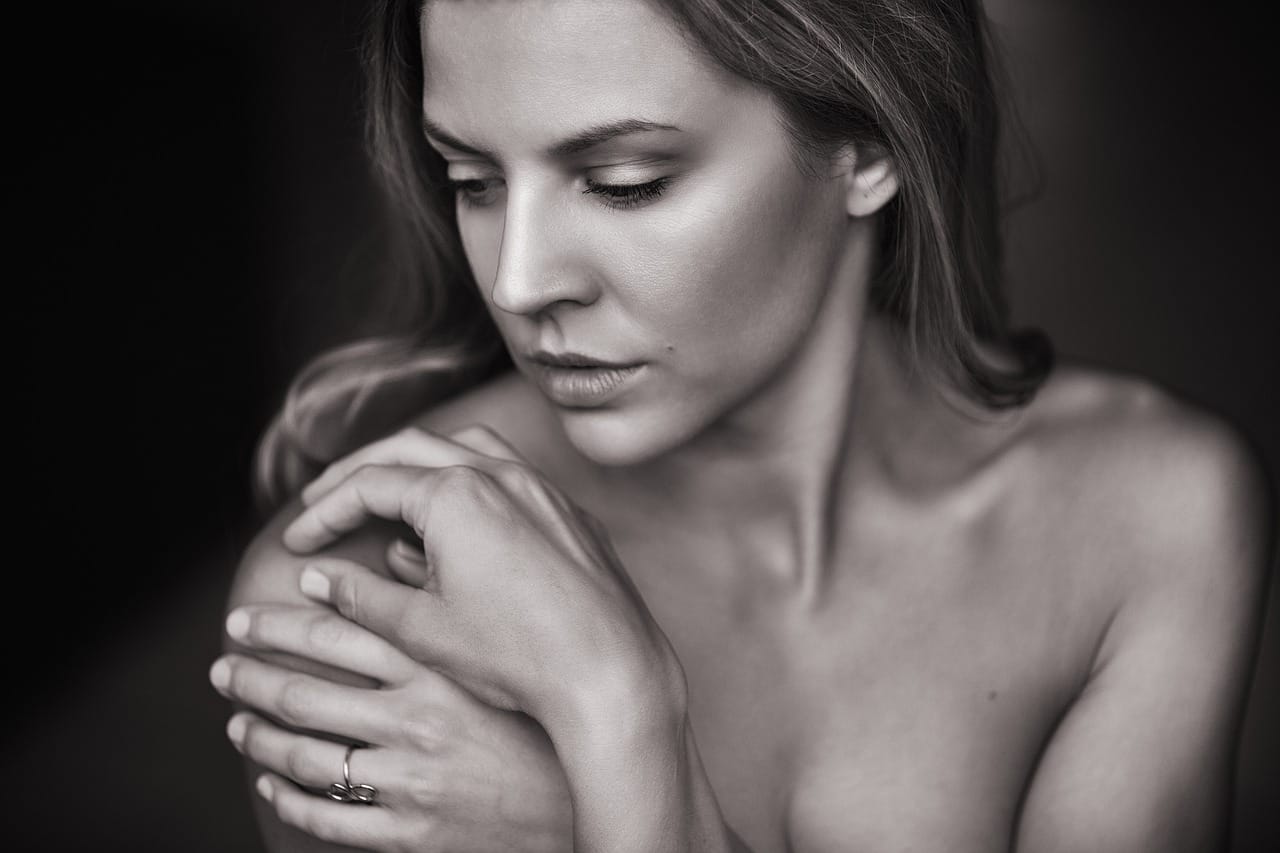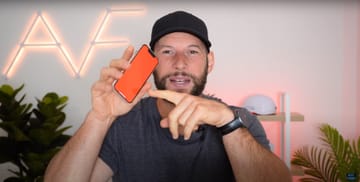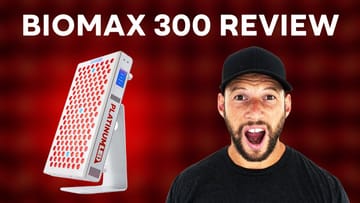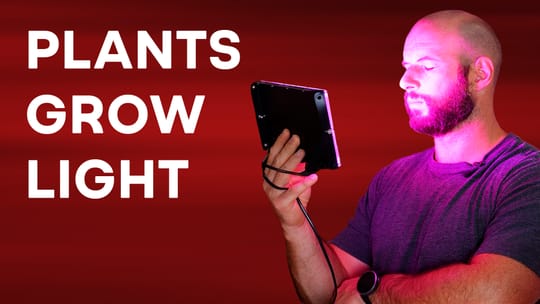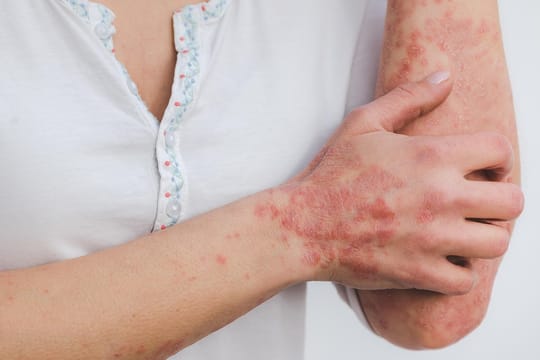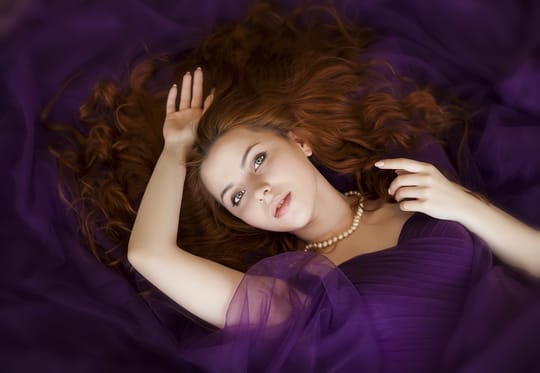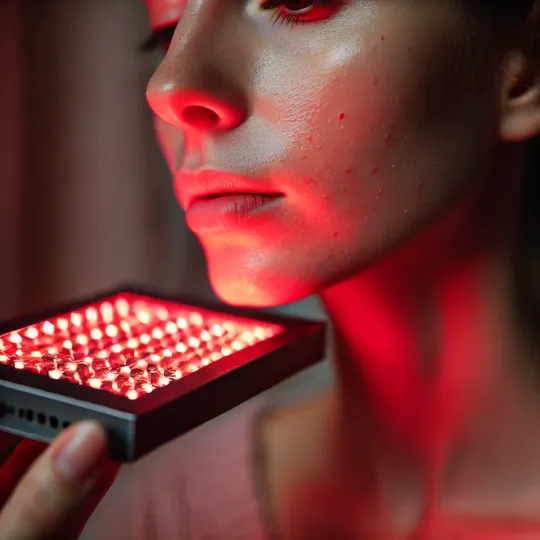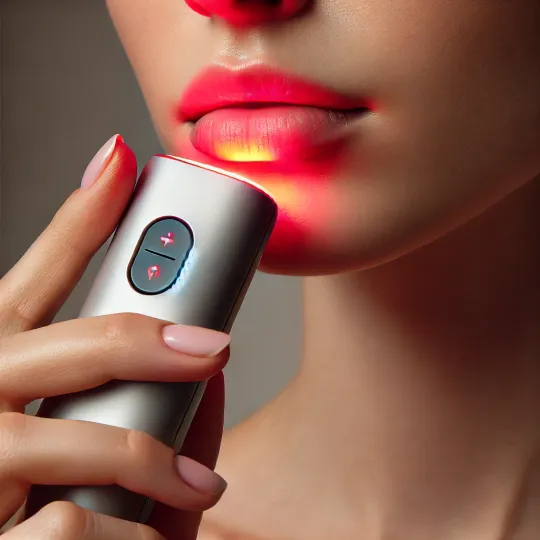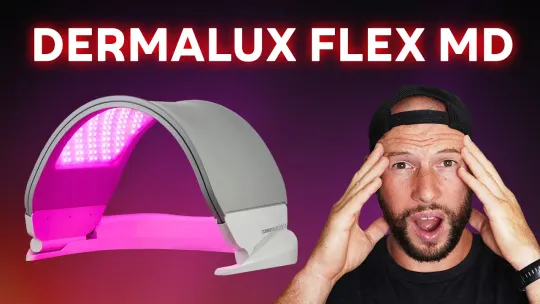There are tons of dermatology topics out there regarding red light therapy for skin. Examples are acne vulgaris (commonly known as "acne"), atopic dermatitis, diabetic dermopathy (a side-effect of diabetes), fibrosis, herpes, scars, psoriasis, and so forth.
Today I'm not going to talk about these pathologies too much. Instead, I'll talk about red light therapy benefits for skin beauty and rejuvenation. What's particularly important here are topics such as photoaging of the skin.
Why does this topic matter so much?
First, beauty is one of the most popular reasons people use red light therapy in our Facebook group and on our YouTube channel comments. Also, the skin care market is growing like crazy - the market is around $100 billion USD in size in 2023 and will grow by 60% up to 2030 (1).
Red light therapy masks have also been trending on social media such as TikTok (2). Dermatologists are also embracing the idea - finally - that this therapy works, and hence, there's a surge in popularity for such products recently (3).
Some estimates say that the red light therapy industry will grow by about 5% per year in the coming years (4). But that's not what we're seeing - Google Trends for instance shows that popularity is up 2.5X from last year (5). So suffice it to say that red light therapy is getting extremely popular, and hence, I've decided to write a deep-dive article into one of the most popular topics in the space!
Here are the basics you should know about:
Benefits Of Red Light Therapy For Skin
In this section, I'll explain different skin benefits of red light therapy for skin health. You can view my full breakdown of benefits in a later section that's quite heavy on the science, but the basic benefits are:
- Less wrinkles and more collagen in the skin
- More firmness and elasticity
- Better skin hydration, in some studies at least
- Less redness
- Lower signs of photoaging (damage due to excess sunlight exposure), leading to better pigmentation and coloring of the skin
- Protection against overexposure to too much ultraviolet light
- Likely slower aging of the skin
- Generally, a better appearance of the skin, due to the benefits listed above. So other people will rate your skin as looking better and brighter
If you want really specific numbers on these topics, then keep reading until you hit the scientific research section below. This video on red light therapy masks will also showcase a wonderful study:
Also, it's likely that other wavelengths such as blue light or green light have additional benefits. More on that topic later as well, in my science section.
Skin Conditions That Can Be Treated by Red Light Therapy
Next up, let's consider a few skin conditions that are affected by red light therapy.
- Acne. Red light therapy, and especially blue light, can counter acne problems, such as the inflammation (31; 32; 33; 34). Ulcers may also be treateable with red light, as are wounds in general.
- Wrinkles and other aging signs. I've explained many of these benefits in the earlier section, and will go into much more detail later on.
- Psoriasis. Although the evidence isn't the strongest, red light therapy likely has a benefit for psoriasis and also atopic dermatitis (35; 36). The evidence for ultraviolet light in these cases is stronger though!
- Eczema. Very few direct studies exist on this topic. However, anecdotally, many people say that they've got benefits for eczema, using red light therapy.
- Rosacea: Red light therapy modulates the immune system, changing the inflammatory response (37; 38; 39; 40). The effects may be better when combined with medications though. We do need more high-quality human studies here, as with eczema.
- Wound Healing. This area has the highest level of evidence right now. Combining red and blue light may have the best effects here (41; 42; 43; 44; 45).
- Sun Damage. Many people are worried about photoaging - or the damaging effects of the sun. This topic is extremely complex though, with many factors such as sleep and diet and smoking status playing a major role, so I don't want to oversimplify here. Suffice it to say that red light therapy can precondition your skin and may protect against sunburn.
I won't go into great detail here though, as I'll write different dedicated articles to each of these topics. An example is the red light therapy for scars that I wrote earlier, or my red light therapy for hair loss blog.
Also, whether red light therapy works for these skin cnoditions
Success Stories: Reviews On Red Light Therapy And Skin Health
I've collected a few testimonials of people on their experiences with red light therapy and skin health. Here are some examples. Chih-Eh Y., states in our Facebook group:
"I’ve noticed it has replaced a lot of my serums for wrinkles. I’m down to peptides and mositurizers and a toner at night and sunscreen in the morning. And I’ve managed to keep wrinkles at bay and my skin looks glowy."
Next up, Kelly M. states that she's had the following benefits:
"Since starting red & NIR LED light therapy, my skin is noticeably smoother, pores look smaller and skin more clarified and refined. The under eye area is noticeably smoother and was the first thing I noticed in my results. I barely get any hormonal blemishes anymore either. My skin is much more even toned with a dramatic decrease in redness and hyperpigmentation from past breakouts (those reddish marks left that stick around for decades). It also has a glow to it and is more vibrant, especially straight after the LED light treatments."
Most people overall are positive on red light tehrapy for skin benefits. Some people have side effects though, such as Jill M.L. who states:
"A double-edge sword consideration for using PBM on face is that it can cause facial hair on women. I have experienced this personally."
And she also states that:
"The negatives side: I used Elevare Aesthetic light and skin settings on Avant and thought I saw a worsening in skin Sun Spots and Lip Line wrinkles. I think I over treated, so it is really important to be measuring dosage with each instrument or err on the cautious side."
So, keep in mind that not every experience is positive! We want to do justice to both the good and bad, so we want to fully inform you about both the science and personal experiences before you make a decision.
Next up, the more hardcore science on this topic that I'll break down in great detail:
Scientific Research and Evidence On Skin Rejuvenation - Advanced Section
I'll break down a few systematic reviews on this topic in this section. I'll begin by closely analyzing a few systematic reviews - which analyze and aim to integrate all high-quality existing research on a given subject.
I've relied on Vladimir Heiskanen's Excel Sheet that contains 7,000+ studies on red light therapy as of March 2024. From that sheet I'm breaking down all studies on skin rejuvenation, starting with the systematic reviews above all else and then some individual studies that were published after these reviews came out.
I'm specifically looking at the "Dermatology" - "Skin Rejuvenation" category here. You can find all studies Heiskanen quotes there, as well as below in my breakdown that's much easier to understand for the smart but non-expert reader.
(I've previously considered skin-related topics such as my summary of all red light therapy mask studies, or using red light therapy for scars - you may want to check those out as well!)
Only two reviews currently exist on skin rejuvenation, both from 2021, so I'll break these down into great detail!
Here we go:
Review 1: The Dose Of All Types Of Light - Whether UV, Visible, Or Infrared, Creates The Benefit Or Poison
So first up, we've got a review on the effects of different types of visible light and photoaging (6; 7). Photoaging is the effects that sunlight can have on the skin that makes you look older, although in my opinion that topic is extremely complex as there are tons of different factors influencing whether your face and other skin ages in the sun or not.
Nevertheless, this article not only discusses red and near-infrared light but also other types of visible light. Examples here are blue light, green light, and yellow or amber light, which I've witten articles about in the past.
The researchers start with the following statement:
"Radiation emitted by sunlight that reaches the surface of the earth consists of ultraviolet A (UVA) (320-400 nm), ultraviolet B (UVB) (290-320 nm), visible (400-700 nm), and infrared (IR) (>700 nm) spectrums.1 Although most of the effects of photoaging on the skin have been studied in UV radiation (UVR), there has been increased interest in the effects of visible light (VL) on the skin. Humans are exposed to VL wavelengths through sunlight, light emitting diodes (LEDs) and electronic devices in the modern age, although the energy and fluence rate of the latter are not enough to cause skin damage.2 VL has been previously implicated to contribute to the photoaging seen in Fitzpatrick skin types I-III.3, 4 Clinical manifestations of VL exposure, such as pigmentation, have been demonstrated in Fitzpatrick skin types IV-VI.5" (7)
Fitzpatrick skin types, here, is typically understood as the amount of melanin in your skin that gives it a darker tone (8; 9; 10).
The most surprising statement in this review, however, is that all types of light can cause your skin to age, not just ultraviolet light. Of course, the dose matters a lot here.
During photoaging, skin quality goes down. For instance, the collagen and elastin content in the skin go down. Collagen gives the skin firmness and elastin supplies elasticity.
According to the review, chronic inflammation, DNA damage due to UV exposure, and Reactive Oxygen Species (which are the byproduct of energy generation but also of stress!) are the main culprits here. That ROS formation is not purely a bad thing. Researchers write that:
"On the other hand, ROS formation is also thought to contribute to VL-induced photorejuvenation through collagen destruction, which can subsequently elicit new collagen formation. This was observed following exposure to broad VL (400-800 nm) at doses typically used for skin rejuvenation (20-40 J/cm2).16" (7)
So, just like UV light, visible light can act as a temporary stressor. That's not a bad thing - exercise or cold or heat exposure are temporary stressors that help your body get stronger or more functional. And, the combination of visible light (the colors of the rainbow) with ultraviolet and infrared light (mostly heat) leads to an even stronger effect than either of them alone.
Many other mechanisms exist by which even visible light acts as a stressor on human biology that are laid out in the review (7).
Here, again, the researchers also make an interesting statement about dose:
"Alternatively, the combination of VL (405-425nm, 50mW/cm2 to a dose of 45-60 J/cm2) and IR (850-890nm, 50mW/cm2 to a dose of 45-60 J/cm2) has been used in the realm of esthetic dermatology practice for photorejuvenation, skin resurfacing, and smoothening of fine wrinkles.25 Taken together, the aforementioned studies demonstrate that depending on the parameters, VL can induce both pro- and anti-aging effects." (7)
Surprising here is that the total dose of visible light is equal to that of infrared, both at 45-60 J/cm2 - keep in mind that red light is visible light, not infrared (IR).
I won't go too much into the UV light here as they're not included in many beauty products, so I'll stick to the visible light and infrared. The researchers then venture into the effects of blue light, specifically the side effects that occur at higher doses. The article talks about side effects that occur at doses such as 15 J/cm2 and 45 J/cm2, which goes up to 80.
Clinical studies with higher doses of blue light on skin health exist as well. The researchers write that increasing the dose of 380-495nm light up to 50 J/cm2 and even to 100 J/cm2 increases ROS and affects the carotenoid concentrations (which you get mostly from plant food). The higher the dose, the bigger the effect (7).
Then there's the effect of yellow light, on which not much research exist. Researchers write here:
"Weiss et. al, treated 90 patients with photoaged skin using a full panel 590 nm non-thermal full face LED delivering 0.1 J/cm2 using the pulse sequence of 250 milliseconds “on” and 100 milliseconds “off” for each treatment for a total of eight treatments over four weeks.36 Digital imaging showed an improvement in signs of photoaging such as periorbital rhytids, erythema, and pigmentation in 90% of patients. Of the 10 biopsy specimens obtained, an increase in collagen I deposition and reduced MMP-1 activity were noted in the papillary dermis.36" (7).
This reflects my viewpoint on yellow light for skin health. In my article on yellow or amber light, I stated that benefits include less skin redness, lower risk of hyperpigmentation, less inflammation, slows skin aging, counters the effects of UV overexposure, and may potentially counter skin pathologies such as scars or rosacea.
Lastly, the researchers consider red light therapy or "photobiomodulation." They define red light therapy starting at 620nm and moving up until 905nm - thereby not accepting wavelengths such as 1,060 or 1,064nm that certainly is valid in my opinion.
Fortunately, the researchers of this systematic review do acknowledge that red light therapy helps skin firmness and prevents wrinkles. But, the researchers also state that there is limited evidence for these statements - in part because the review was written in 2021 and based on data of 2020 and earlier.
I will therefore consider recent studies that have come out in more detail - some of which I've already talked about in my red light therapy mask benefit article. The researchers state that:
"In a 10-patient cohort clinical study by Mezghani et al, LLLT (655 nm and 785 nm, average dose 27.77 J/ cm2 with the number of sessions dependent on the patient's age) significantly reduced signs of facial skin aging, including wrinkles and the loss of firmness" (7).
Surprisingly, here, the dose for skin treatment is quite high. Normally you'd recommend up to 8-10 J/cm2 for superficial tissue treatment - although Alex has shown that red light therapy dosing is extremely complex.
Nevertheless, the conclusion section of this article is extremely well written and captures a thought that I would generally agree with. The researchers state that ultraviolet and blue light are most damaging at excessive doses, but protective at normal doses.
And, longer wavelengths such as yellow, red, and infrared are generally protective, but can also be damaging when the dose becomes extremely high.
So, for the best effects you'll want a combination of wavelengths, at their ideal dosing levels. But what dose?
Well, the average 37-degree latitude in the US gives you about a 40-50 J/cm2 dose of 400-500nm (blue) light in an hour. For yellow, that's about 15 J/cm2 and for red that's about 60 J/cm2.
There are still a lot of limitations to this study, that the researchers note. They write:
"Although various complex mechanisms by which VL induces photoaging have been suggested, there are several limitations noted in the literature. One main issue is the inconsistency of wavelengths and irradiation protocols utilized among studies, which precludes direct comparison of results from different studies. It is to be noted that irradiance (rate of radiation delivery) should be presented in any study on visible light. Additionally, studies often utilized irradiances that do not simulate natural sunlight exposure, or are orders of magnitude greater than the corresponding output from electronic devices.11, 12 Generalizability of results from such studies to real life scenarios is thus limited" (7).
So, there are tons of methodological problems. We've discussed these problems before in our interview with James Carroll, an expert in the photobiomodulation field!
But next up, let's consider the second review on this topic - also from 2021:
Review 2: Red Light Therapy For Facial Rejuvenation And In Plastic Surgery
The second review focuses not on photoaging primarily but on photobiomodulation for both facial rejuvenation and plastic surgery (11; 12). The downside here is that I cannot access the study, by no means possible so far, so I'll just copy the abstract of the article:
"Photo-biomodulation (PBM) also known as low-level laser therapy is a rising technology with multiple potential uses in medicine and recently in the cosmetic field for the treatment of skin conditions and skin rejuvenation. Due to its wound healing and anti-inflammatory properties, there is an increase in popularity in its use as adjunctive treatment before and after surgical procedures in the face and neck." (11).
That conclusion doesn't really help me but I still wanted to mention the existence of this review because I want people to be able to track my research methodology.
So, next up, I'll go through recent studies that have come out and briefly summarize them myself:
Recent Red Light Therapy Studies Of The Last 10 Years On Red Light Therapy For The Skin Benefits
Here I'll summarize the outcomes of any animal and human study on the topic of red light therapy for skin rejuvenation of the last ten years - so ranging from 2014 - 2024.
I'm doing this because the reviews on this topic aren't comprehensive enough. Please keep in mind that I don't have the methodology of a researcher creating a systematic review either, as I cannot spend four weeks full-time writing an article (because I'm not paid by taxpayers).
Multiple studies have shown that the 620-670nm wavelengths have the best effects, even when compared against full-spectrum light.
- Different power outputs are used, and you can get good results with both low and high power outputs. So, there's no need to use 10 mW/cm as 50 mW/cm2 can work well too.
- Most dosages are found between 3 and 15 J/cm2
- I've not seen any human comparison studies from 2014 that directly compare red and near-infrared light. Both show promising results but from the 2014-2024 data we don't know whether red only is better than the red/near-infrared combination.
- Overall, there seem to be very good effects that keep on building over the course of months for wrinkles, skin elasticity, firmness, hydration, and more.
- Amber light shows similar results as red light in one human study
- Almost no side effects are mentioned, and if they are, they are very mild. No side effects of brown spots or facial fat loss are mentioned either - a worry of some people using red light therapy for the skin online.
- In many studies, ultrasound or radiowaves or microcurrent may enhance the effects, although, comparison studies with light only are needed.
So next up, all human studies on skin rejuvenation
- First up, a study from 2014 (15; 16). Except for the control group, participants received either 611-650nm light, which is the red part of the light spectrum, or a very broad range of light between 570-850 nm polychromatic. The dose was 9 J/cm2, which is in the higher end of the skin dosing range. The photographs were also blinded for the researchers, when they rated the participants on their skin appearance. Researchers write that skin complexion and feeling improved. Also when skin roughness was scientifically measured it improved - the same is true for collagen density. And, photos improved in appearance when the researchers were blinded as to who received treatment or was in the control group. Figure 3 below shows you the outcome that was achieved over time, with the lower pictures being the after photo (16):

- 69% of participants in the red light therapy group showed improvements, with 14% retaining results and 10% getting worse. In the control group, just 4% improved, 22% stayed the same, and 74% got worse. The group with the large spectrum improved most, with 75% getting better results, 15% staying the same, and 10% who looked worse. Nevertheless, this study shows that red light therapy, either in the 610-650nm range or a big spectrum between 570nm amber light and 850nm near-infrared light, can have huge effects on skin appearance.
- Then there's a 2016 study where red light therapy was compared to radiowaves (13; 14). All groups, including the control group, contained about 15 participants. The wavelength used was 658nm, so more or less 660nm light, and a dose of 3.82 J/cm2 was used (14). The total dose is very low though, but in line with skin treatment protocols. Participants in the red light therapy group received six treatments per week. There were no good results here, except for improvements in appearance.
- Then, there's another 2017 study comparing red light therapy and radio frequencies (17). Treatment occurred every other day during a period of six weeks. The goal was to investigate the wrinkles around the eyes. Researchers used the Fitzpatrick wrinkle scale to measure potential changes. The study participants had a II-VI score on the Fitzpatrick wrinkle scale, and lowered their number by 1.5 points on average. Almost all participants lowered their score by 1 point also. Some participants had edema or skin redness after treatment, but all of that disappeared within 24 hours. The device had a real small treament area but power output was quite high, as "The red and IR LEDs emit optical power of 70 and 55 mW/cm2". What red and infrared wavelenghts are used isn't mentioned in the article. Interestingly enough, the device looks a bit like the Solawave, in that it combines the radiowaves and red light therapy.
- Then there's another study investigating 635nm light from 2017 (18; 19). No strict control group existed in this study, was red light therapy was compared to radio waves and electro-acupuncture. Participants did two sessions of 15 minutes per week. Now, surprisingly, not only did the 635nm light reduce wrinkles around the eyes, the same was true for the electro-acupuncture and the radio wave treatment. Skin moisture also improved.
- Another 2017 study also investigates the combination of red light therapy with radio waves (20). What's most surprising here, is that the results are maintained very well over time. Researchers write: "The effect can be noted 1 month after treatment, being the most apparent 3 months after treatment, and being maintained at least 6 months after treatment" (21). The only downside of this study is that you cannot distinguish between the effects the radio waves have and the red light therapy.
- Next up, a 2017 study compares white light (which is more full spectrum) with 660nm red light (21). The white light used ranges all the way from 411nm to 777nm. The study included 52 female adults and tested what happened to their wrinkles. The dose used was 5.17 J/cm2. The improvement in the 660nm group was almost double of that of the white light group. 660nm may affect human physiology differently, although researchers write that there's no final mechanism known yet. Researchers write:
"The molecular mechanisms of rejuvenation by LLLT have not been clarified yet. The proposed underlying mechanisms leading to collagen production are thought to be initiated by the antenna molecule mitochondrial cytochrome C oxidase. Absorbed light converted to chemical kinetic energy would cause changes in membrane permeability, improve signaling between mitochondria, nucleus, and cytosol, and lead to reactive oxygen species (ROS) formation. The specific role of ROS in increasing fibroblast proliferation and motility through specific mitogen-activated protein kinase (MAPK) signaling pathways in vitro has recently been reported." (22).
- Next, a 2020 study with technically a neutral outcome (23). The researchers used a split face setup, of which you can probably guess that it's not optimal because of the systemic effects of red light therapy. 637nm and 854nm were used here. The researchers measured many different variables, such as the elasticity, texture, wrinkles and hydration of the wkin. Every two weeks there was a measurement, up until week eight. The researchers measured the following improvements over the weeks: "37.5%, 41.7%, 58.3%, and 62.5%" - so results kept on increasing as the weeks progressed (23).
- Next up, a 2020 mask study (24). The mask uses 660nm and 850nm light together with hyaluronic acid for skin health. The control group only used the hyaluronic acid, not the mask. The conclusion here is that the combination of hyaluronic acid and red light therapy works best. Different areas of the face, such as the lower skin or nasal area had improvements in firmness, and healthier pores. The mask group showed quicker improvement than the group that only used hyaluronic acid. A good outcome, but again, not the comparison between 660nm and 850nm or so, that I'd like to see!
- Then, one more 2020 study (25). Skin density improved while wrinkles were reduced after a month of treatment. The wavelengths used were 440nm, 660nm, and 780nm light. A serum was also used on the skin. And, the light was applied to the face with a handheld device that is moved over the skin, around the forehead, chin, and eyes. The researchers state that the infrared light interacts with the serum, which then has a synergistic effect for skin health.
- We're moving closer to the end - here's a 2023 study using 590nm light and 660nm light that shows a 30% reduction in wrinkles after a month (26; 27). The wrinkles were measured around the eyes. Treatment occurred during a period of a month. The face was actually split between red and amber, meaning that one part of the face was treated with 590nm light and the other with 660nm light. Both amber and red light show really good results here. Only wrinkles improved though, the skin hydration and viscoelasticity weren't altered.
- Then there's the famous 2023 study, that uses a mask as well, but the 633, 830, and 1,072nm wavelengths (28). Males were included for six weeks in this study. Here's what the researchers write:
"The participants reported overall favorable results and improvements in all individual categories, were satisfied with the treatment, and would recommend the product to others. The participants perceived the greatest improvement in fine lines and wrinkles, skin texture, and youthful appearance. Photographic digital analysis demonstrated favorable improvements in wrinkles, UV spots, brown spots, pores, and porphyrins." (28).
- Sometimes, in our Facebook group, it is mentioned that people develop brown spots or lose facial fat, but these studies have not noticed that so far.
- Next up, another mask study with 630nm light that shows great results (29). Results increase up until the 3-month mark of the study. The power output is 15.6 J/cm2 here. Results also lasted for up to one month after stopping to use the mask.
- From 2024 there's another facial skin study (30). Not just red light was used but also microcurrent, ultrasonic, and radiowaves, so it's hard to ascibe an effect to one of these. A skin biopsy was performed in 36 women here, for measuring skin quality, and only one part of the skin was treated. The rearchers write that: "Parameters associated with skin aging including skin hydration, elasticity, roughness, skin pore size, and eye wrinkle volume showed significant improvements after 8 weeks of the device use, relative to baseline measurements and the control side" (30).
And that's it - all human studies on skin rejuvenation! I won't go into the animal studies here though, as they're far less relevant than their human counterparts.
Conclusion: Red Light Therapy Benefits For Skin: Extremely Promising Research But More Is Needed
So, what's the conclusion regarding red light therapy benefits for skin health? The existing research is extremely promising for many benefits, such as anti-aging, countering wrinkles, protecting against sunburns, decreasing photoaging risk, and more.
And yet, existing research isn't perfect. I'd like to see a ton more studies on topics such as the comparison between red light and near infrared light, or between red and amber light. And, other wavelengths in combination with traditional wavelengths, such as blue and green, is needed too.
Then, I'd like to see more longer-term studies, and better research methodology. I'm sure many of these developments will come in time. So, red light skin therapy has a long way to go but is already very well-developed as well.
So, finally, almost anyone who wants beauty improvements should try using red light therapy for skin beauty!
Frequently Asked Questions
Below I'll briefly consider a few commonly asked questions, such as about red light therapy for aging skin, or light therapy for red skin, that haven't been answered before.
Is Red Light Therapy Safe for (Dark) Skin?
What Red Light Skin Therapy Is Exactly?
Red light skin therapy is aimed at improving your skin quality. Examples here are red light therapy masks, or bigger panels that can treat large areas of the body at the same time.
Also, if you want Alex Fergus's recommendation for the best beauty tabletop panel, check the video below:
https://youtu.be/tIW95HQuncg
Can One Apply Red Light Therapy for Skin Cancer?
Is Red Light Therapy Effective for Skin Tightening?
Absolutely, with a low dose of up to 15 J/cm2, you can get results in as little as a week. Studies also show skin tightening benefits will increase by up to three months.
How to Prep Skin for Red Light Therapy?
You just remove your clothes and treat your body at the correct distance. Before treatment, it's best to remove all makeup or other compounds that are on the skin, so that the light can ideally penetrate well.
Can Red Light Therapy Cause Skin Rash?
In very rare cases, such as 10% in the studies I've listed above, people have poorer outcomes with red light therapy. By far the most people have great results, however, so if you develop a skin rash or redness, you're in the clear minority.
Is Red Light Therapy Good for Red Skin?
Yes, many studies show that red light therapy reduce redness. One mechanism here is a reduction in inflammation, with may help with rosacea or eczema, or simple skin rashes.
Can You Use Red Light Therapy for Itchy Skin?
There's very little research on red light therapy for itchy skin. One study on a rare condition called "Discoid lupus erythematosus (DLE)" did show reductions in itching (53).
In another case, with allergic rhinitis, itching was also reduced (54). These cases are not representative of regular skin itching, however, and that's why we'll need more studies on this topic before making a definitive judgment.
Do Red Light Therapy Beds Work For Skin?
Absolutely, red light therapy beds work for skin benefits and health. But panels do too. You may want to watch the following video on red light therapy beds versus panels:
https://youtu.be/r4x6D5VkszI
This is a post by Bart Wolbers of Lighttherapyinsiders. Bart finished degrees in Physical Therapy (B), Philosophy (BA and MA), Philosophy of Science and Technology (MS - with distinction), and Clinical Health Science (MS), has had training in functional medicine, and is currently chief science writer.
Found This Interesting? Then You Might Like:
- Discount Codes, Deals & Recommendations - Red Light Therapy
- Red Light Therapy Wavelengths Benefits: The Ultimate Guide
- Does Red Light Therapy Help Scars? The Science
- Red Light Therapy Mask Science: Everything You Need To Know
- 590nm Wavelength Health Effects Ultimate Guide
- Blue Light Therapy: Everything You Need To Know
- Red Light Vs Blue Light Therapy: Benefits And Differences
